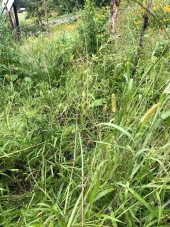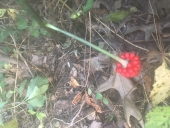
 4
4




"Do what you can, with what you've got, where you are"
– Squire Bill Widener via Teddy Roosevelt
 5
5




Liam Hession wrote:Finally, i’m pretty sure the answer is no, but figured i’d ask here – are those little green sprouts, which i saw around the roots of many of the plants i pulled up, are they germinated perilla seeds?
 4
4




'What we do now echoes in eternity.' Marcus Aurelius
How Permies Works Dr. Redhawk's Epic Soil Series
 3
3




 5
5




 8
8












 7
7




'What we do now echoes in eternity.' Marcus Aurelius
How Permies Works Dr. Redhawk's Epic Soil Series
 2
2




Moderator, Treatment Free Beekeepers group on Facebook.
https://www.facebook.com/groups/treatmentfreebeekeepers/





 5
5




Richard Kastanie wrote:In my experience, perilla is easier to get under control than most other weeds. That is because it doesn't have any viable seed until the end of the season. In my experience, perilla rarely even shows a hint of flowering until after September 1st, and doesn't have viable seeds until late September. Since its an annual, keeping it from going to seed is all that's needed to reduce the population. If you chop the plants down once in early September when they have just started to flower, they will not have time to regrow and seed before the weather gets too cold. The density of plants in the area should be significantly less even the next year. Keep doing this for a few years and it will be virtually eliminated from the area, unless its an area that receives runoff water during heavy rains that bring seeds from another patch somewhere uphill (perilla patches are common in such areas).
"Do what you can, with what you've got, where you are"
– Squire Bill Widener via Teddy Roosevelt
 3
3




Joylynn Hardesty wrote:Hmmm.... it seems I have not been paying as much attention as I'd thought. Look! First set of full leaves! Purple is the variety dominant in my garden.
"Do what you can, with what you've got, where you are"
– Squire Bill Widener via Teddy Roosevelt
 5
5





|
Happily living in the valley of the dried frogs with a few tiny ads.
Play Your Way to a Sustainable Lifestyle: Uncover Permaculture Principles with Each Card
https://gardener-gift.com/
|




